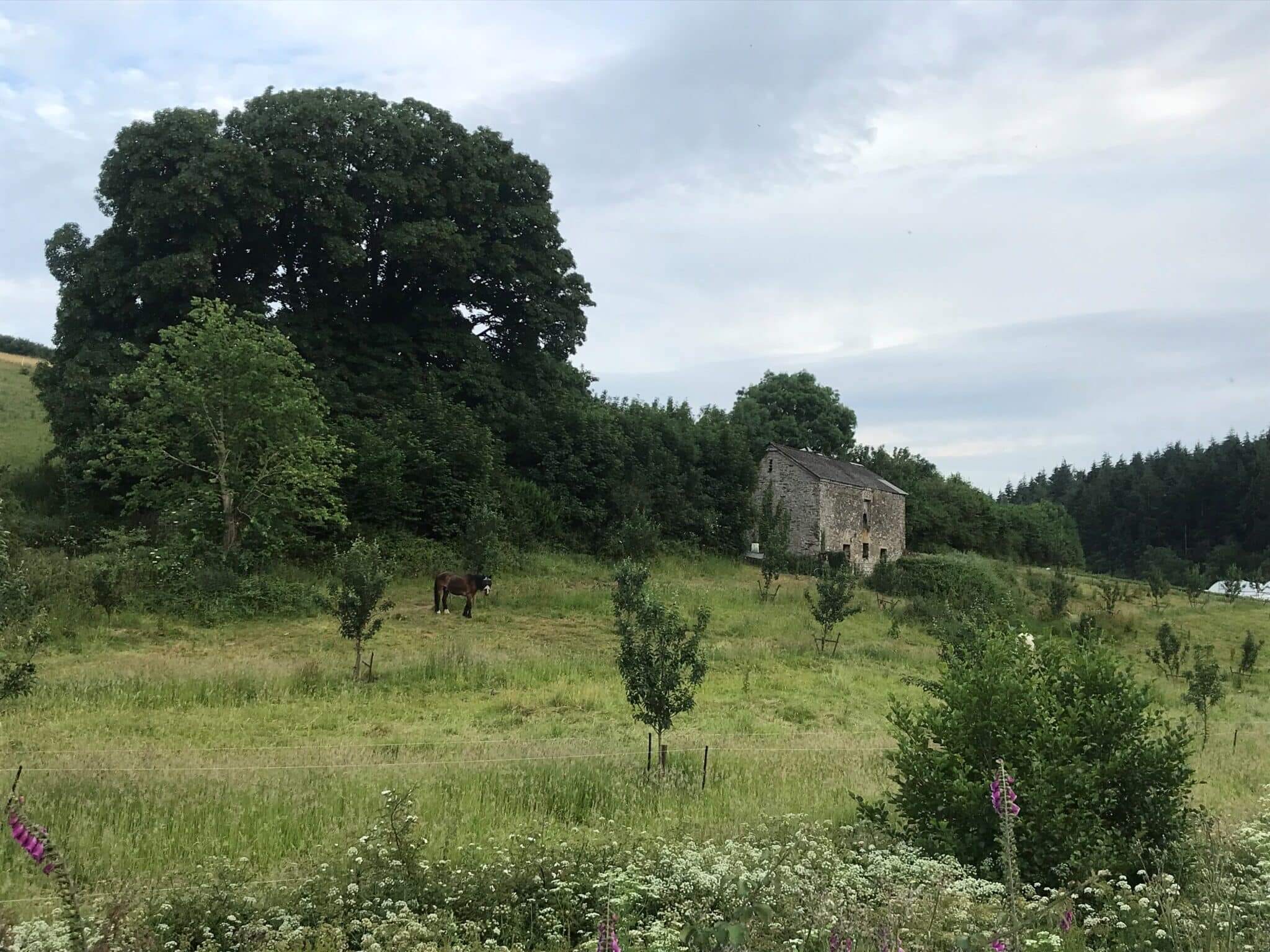The Industrial Revolution, rising urban populations, and protective ‘Corn Laws’ pushed up food prices and fuelled an agricultural building boom, peaking in the mid 1800s. Over my lifetime, those solid, well-built stone and slate buildings have progressively fallen into disrepair, or been converted into houses. On working farms, they have been replaced by ugly, short-lived steel and concrete boxes, which allow modern machinery and the efficient production of cheap food.
At some point around 1850, someone had the cash to create what would then have been called a ‘model farm’ at Baddaford, where my wife Geetie and I now farm. Inspired by the Industrial Revolution, progressive farmers invested in modern crop and animal breeding, labour-saving mechanisation, drainage, leats, and water meadows – in a spending spree driven as much by ego as by economics.
At Baddaford, a mill pond (long since silted up) was built, with a 15-inch clay pipe leading to a vast three-storey mill. My neighbour remembers the waterwheel, which drove an apple press and flour mill. Occasionally we find old pipes and the remains of water gates. The apple press screw, too heavy to move, still lies in the dark, cool basement that would have housed maturing cider in wooden casks.
Soon after this model farm was built, the Corn Laws were repealed, railways were built, and cheap grain flooded in from the US prairies. This led to 70 years of agricultural depression, only ended (temporarily) by Hitler’s U-boats and the food shortages that persisted through the 1950s. But our mill still stands, as an impressive testimony to craftsmanship, Victorian engineering, and the wealth, power, and hubris of the landed gentry. After 170 years, the roof nails (struck by hand on a local blacksmith’s anvil) have finally given out, allowing the slates to slip, water to enter, and dilapidation to begin.
Chastened by Geetie and a local architect, I have, slightly reluctantly, accepted my obligations as custodian of this building, and started a renovation with no particular end in mind. Perhaps it will become workshops; perhaps it will house nut-processing equipment (we will pick a few hazels this year); perhaps we will simply preserve a structure of lasting, functional beauty, in a world where the returns from ugly buildings are much higher. There will be no water wheel – but there will be enough solar panels to power the farm when the sun is out.














Good piece thank you.
Don’t forget to mention the rising rents from land values. Which push the working farmer off the land more than anything else.
See the Scottish Farmer for an alternative and welcome radical view on this.
https://www.thescottishfarmer.co.uk/opinion/15897523.land-value-tax-replace-income-tax-vat/
All the best.
Glad to hear at least this old building is to be rescued. Power to all the elbows involved.
Hope some young blood could be trained in the necessary skills as the job is done? Then it will be more possible for other such buildings to be saved, as there are younger tradespeople who have gained the skills to do the work.
Once watertight, how about basic accommodation for harvest [or other tasks] camp workers such as customers willing to lend a hand?
Such an interesting piece and glad you’re considering other uses than housing. Here in Calderdale we have so many stone barns from the times when people farmed and made textiles on site. A survey revealed 52 stone barns in one square mile, still standing but mostly now houses. Difficult to believe but I have evidence! The commitment and resources involved in building them was phenomenal.